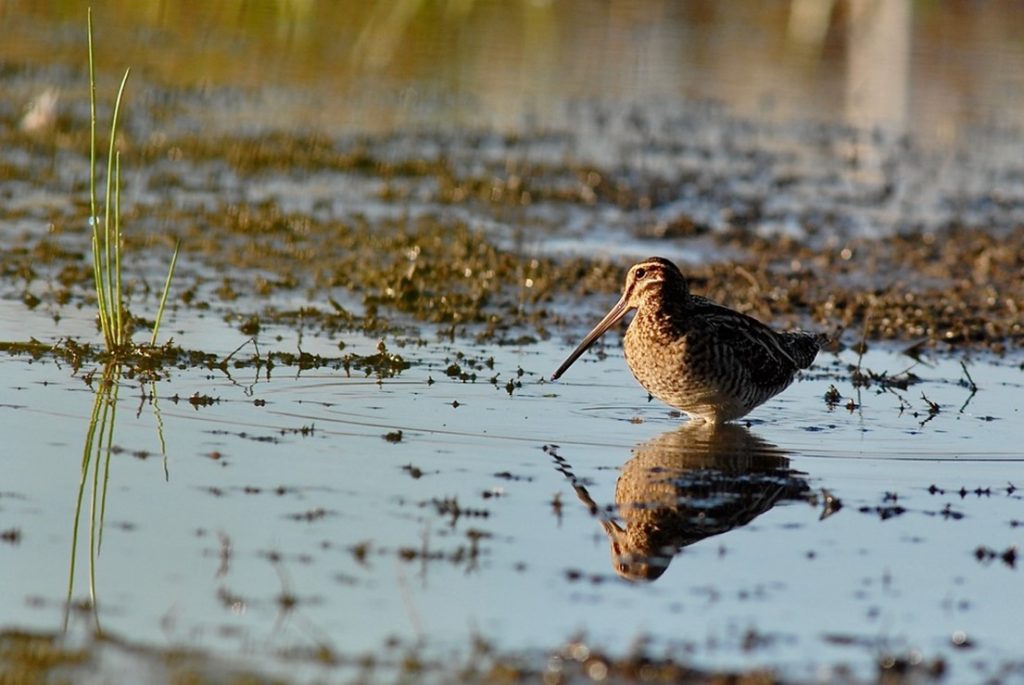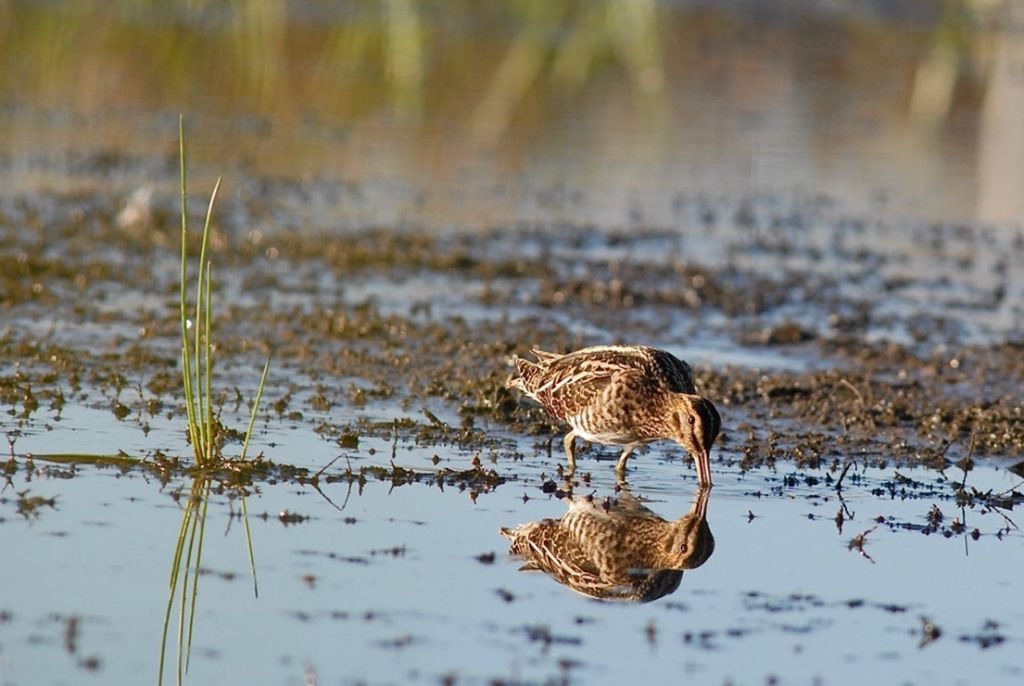Snipes Are Real

Going on a Snipe Hunt
Maybe you were at outdoor school, or on a camping trip with “friends”, when you were invited on your first snipe hunt. The ‘snipe hunt’ usually entailed heading into night with the most gullible person holding a gunny sack and the others carrying flashlights to drive the snipe into the bag. If you fell for this prank, you might have been left alone in the dark woods holding the bag, literally, but snipe are real birds.

Snipe are Migratory Shorebirds
Wilson’s snipe to be specific, are a type of shorebird that are found all year in Marion County. Their scientific name is Gallinago delicata. Snipe are migratory birds and more common in our area during winter when birds from northern sites choose our soggy ground to spend the winter, but some wintering birds go as far as South America. In spring and summer snipe move north with some travelling well above the arctic circle in Alaska to nest. However, some snipe remain in our area to nest in the few remaining wet prairie and wetlands in our local area.

Often solitary, snipe are secretive birds and well camouflaged with their brown and mottled feathers. When flushed they often make a distinctive squeaking “skrinx” call; it is not unlike the sound of your footstep on soggy ground. Occasionally snipe will be out on an open mudflat or along pond shorelines feeding, but more often they are hidden among marsh grasses and sedges. They feed by probing their long bills in the soft mud to find their prey, typically larva of invertebrates. With their long bills and affinity for wet areas, snipe can appear similar to other sandpiper like shorebirds, such as dowitchers.

Sometimes flocks of snipe can be found, especially during migration when they stop at a wetland to rest and refuel. The video below shows snipe flushing along a Marion County wetland in early April. This was likely a migrating flock that stopped to rest and refuel.
As a territorial and breeding display, snipe make a unique sound called winnowing. They make this sound by flying high up in the air and then diving part way down to force fast moving air over the outer tail feathers. If you are fortunate enough to live near a wetland during the spring and early summer, listen for the winnowing in early morning and late evening.
Snipe Require Wetland Habitats
Wilson’s snipe are not going to visit your backyard bird feeder. For the best chance of finding snipe, you’ll need to look in and near the wetlands providing the specific habitat they require. Fortunately, a flashlight and gunnysack are not required.

About the Author

A retired wildlife biologist, Dave and his wife Anita, have resided near Turner since 2003. Dave serves as a Director on the Board of MSWCD, the values and services of which he first became aware about 15 years ago while implementing an NRCS conservation easement on their property.
